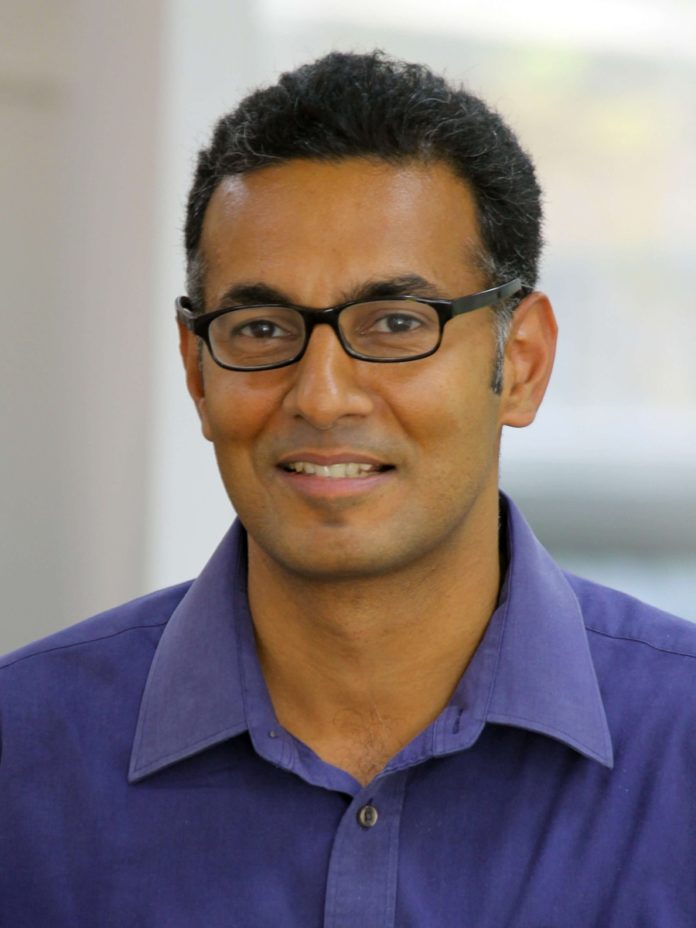Minneapolis-based 75F, a fast-growing building intelligence solutions provider, launched its operations in India in August 2016. The company leverages the Internet of Things (IoT) and cloud computing to predict, monitor and proactively manage various elements in a building such as temperature, lighting, air quality and energy management.
Gaurav Burman – VP & APAC President of 75F talks at length about the opportunities in automation solutions, Indian automation solutions market, 75F’s IoT solutions & its business strategy and a lot more.

Q) Internet of things (IoT) has come up from just a buzzword to become mainstream in the business. Do you feel that IoT is opening an entirely new market? How do you see it in the context of automation solutions?
I would say instead of opening an entirely new market, IoT has propelled the building automation industry to new paradigms – slowly but steadily redefining the building automation market. Vanilla Building Automation Systems, sans IoT, are now becoming old school. A maze of disparate systems controlling various functions such as HVAC, lighting, power management, etc., are progressively becoming ineffectual in meeting the ever-increasing needs and demands of a commercial building and its occupants.
IoT has changed all that – thanks to IoT building automation solutions. These are flexible to adapt to the ever-changing needs, are intelligent to adjust in internal and external conditions, can proactively course correct and, at the same time, are highly efficient in meeting sustainability goals. In effect, IoT-powered building automation systems are making buildings smarter, more energy efficient, cost effective and manageable.
Take for instance, 75F’s Building Intelligence System. Leveraging IoT and applied artificial intelligence (AI), 75F helps buildings sense, learn and work smarter to deliver OE2 i.e. Optimal Experience (OE) x Operational Efficiency (OE). The system not only monitors the HVAC and lighting systems in a commercial building but also proactively controls them, based on data collected from smart sensors, weather forecasts, set points, occupant preferences, etc. The self-optimising, predictive system learns a building’s behaviour and proactively determines the ideal thermal and lighting envelope for the building, thereby keeping occupants comfortable, productive and healthy at all times.
Q) How 75F is leveraging IoT technology in creating its solutions?75F creates bespoke solutions for each site since we recognise that every building is a dynamic entity and would require a dynamic solution. Our solution leverages the latest in technology and IoT to understand a building’s ever-changing needs and caters to them proactively, ensuring energy efficiency and occupant comfort.
Our smart sensors and controllers collect hundreds of data points from each zone, each minute and send the data to our Central Control Unit and from there this data is transmitted to the cloud. Smart algorithms in the cloud analyse data, including real-time factors such as weather forecast, daily usage patterns, angle of the sun, etc., to predict future conditions and determine the ideal thermal and lighting envelope for the building. Post this, instructions are sent to the Central Control Unit and our smart controllers modulate airflow, temperature and lux levels to achieve the perfect balance.
Equipped with IoT and cloud computing power, 75F’s system is much more efficient than the standard building controls systems. We help commercial buildings save up to 50 per cent on their HVAC and lighting energy bills. Due to the energy savings, utility rebates and ease of installation, the payback is typically less than three years. Simple, wireless installation can be done with little disruption. Cutting-edge technology optimises the operational efficiency of the building, making it truly smart and automated.
Q) How do you find the Indian market for your solutions? Is it different from other countries?
The growth potential for 75F in the Indian subcontinent is huge. A booming economy, new building deployments and customers who are aware of and open to new technology makes India a promising market for us. Moreover, since ours is a retrofit friendly solution, we are also looking at the larger piece of the pie i.e. existing buildings.
When we launched operations in India in 2016, we were focusing on a few key verticals such as IT/ITeS, healthcare and hospitality in the four major metros. Within a few years, we have seen traction in other business verticals such as SMEs, BFSI, co-working spaces and retail. We see it as a constantly evolving industry as the market is growing with increasing awareness about the benefits of smart building technologies using IoT and machine learning (ML) in conserving energy and improving occupant experience in workplaces.
Indian building automation and control system (BACS) market is estimated to grow at a CAGR of over 11 per cent during 2017-2022. Further, with the government’s interest in smart cities, I expect the smart real estate market and thereby the BACS to grow even more in the coming years. These smart cities will be the catalysts leading to refining of working standards and leading to a transformation in the commercial building segment.
In the intelligent building segment in the commercial arena, our market studies indicate the PAM for us in the US is approximately US$ 5 billion and in India, it is around US$ 1 billion.
Q) Are you following/planning any strategy to expand your business in India? Are you looking for partners in India?
In India, new building deployments represent an enormous opportunity with growth drivers of the Indian economy appearing to be robust for the medium term. Existing buildings, in fact, provide a much larger opportunity since our solutions are retrofit-friendly. Set against this backdrop, we have been growing organically in the past few years with several deployments across the country.
We are expanding our offering across numerous sectors and in multiple ways that include adding to the capabilities of our solutions, expanding our services suite and deploying additional go-to-market channels to name a few.
We are also using the energy service company (ESCO) route to provide enhanced operational efficiency via an opex model which serves as an additional avenue for growth.
Q) What fraction of your overall business is the IoT-related business?
All of our solutions harness the power of IoT and applied AI. I would hence say 100 per cent of our business is IoT related.
Q) What’s your strategy to create a differentiation for your solutions vis-a-vis your competitors? Any innovative strategy being planned or implemented by your team to create demand for your solutions amongst customers or channel partners?
75F’s predictive, proactive Building Intelligence System saves up to 50 per cent on energy while improving occupant experience (comfort and air quality) by up to 10 per cent in a commercial building. That alone sets us apart from most of our competitors.
Adding to this is the fact that, 75F is the only brand to provide a full stack building intelligence solution in India. From the hardware and software to user interface and data analytics, we take care of all the aspects – from the design to the servicing of our products. Our solution is both easy to deploy and easy to use, thus giving builders, owners and facility managers an insight into the real-time performance of their building.
Q) Finding ‘quality talent’ is a challenge that IoT players are facing in India. Do you agree with this line of thought?
As with any new technology, IoT companies too are struggling to find the right people with the right skills, which makes the hiring landscape more competitive and complex. According to a report by Limitless Mobil, some 45 per cent organisations would like to see more IoT-skilled manpower working with them. In the current market, where talent is aplenty, it is still a challenge to find the right fit – employees who are flexible and adaptable to manage multiple roles, who have a solution-centric mindset and can think out-of-the-box.
I am confident that the Indian workforce would be at the forefront of new technology and gain expertise in this sector too in no time.
Q) IoT is considered an amalgamation of electronics, datacom and IT. Out of these three – which one is going to be the main Achilles Heel for the IoT sector, in terms of availability of good talent pool?
Today, job seekers understand the market and have a sharp grasp of how they contribute to upcoming technology. We see a strong talent in all three sectors. We have built a robust R&D team in Bangalore that caters to the APAC and US markets. We, at 75F, believe in the promise of IoT to improve our lives by designing systems that work so well that you forget they are there.











